The Samsung S95C is an amazingly high-performance television that uses cutting-edge QD-OLED display technology, but if you’re lucky enough to be TV shopping in this price range, I’d recommend the LG G3 OLED TV instead. They’re the two highest-performing televisions I’ve ever tested and both deliver spectacular images. In my side-by-side comparisons I ended up preferring the image of the G3 in most scenes, but the S95C was a close second.
The S95C is the best Samsung TV I’ve ever reviewed. It showed a better picture during testing than less-expensive OLED models like the LG C3, which in turn beat any non-OLED TVs in my experience, including Samsung’s own QLED TVs. The Samsung QD-OLED is exceedingly bright with vibrant color and the perfect contrast of OLED, and in brightly colored scenes its quantum dot-infused color is a notch above that of LG’s OLEDs. But the G3’s image was brighter still and a bit more accurate and realistic, and its superior anti-reflective screen makes it the winner in bright rooms too.
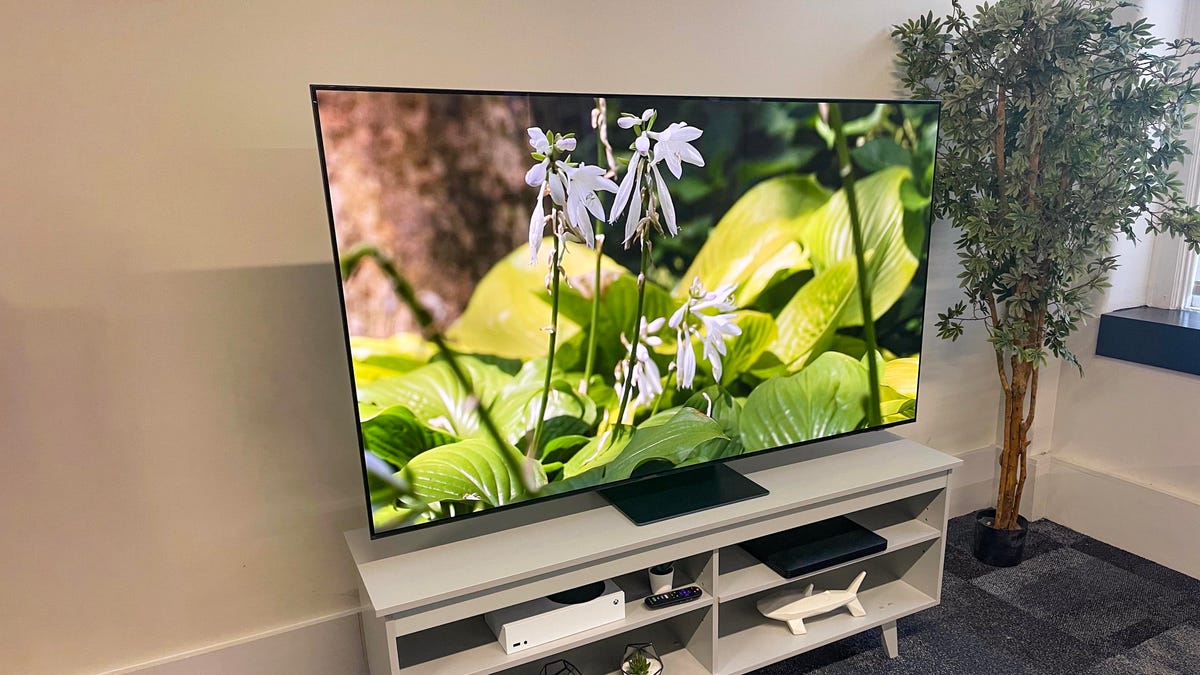
If price is an object for you, however, I don’t think the S95C or the G3 are worth the extra money compared to TVs like the LG C3 and the Sony A80L, which I also used in my comparison. Those less-expensive OLED TVs are still plenty bright and if you’re not comparing them all side-by-side, you won’t miss the extra pop and color. But if you’re a Samsung fan or just want those colors and can afford to pay for them, the S95C is an excellent choice.
S95C sizes, series comparison
I performed a hands-on evaluation of the 65-inch Samsung S95C, but this review also applies to the other screen sizes in the series. All three have similar specifications and should perform the same.
- Samsung QN77S95C, 77 inches
- Samsung QN65S95C, 65 inches
- Samsung QN55S95C, 55 inches
Samsung is also selling the less-expensive S90C series of QD-OLED TV. The main picture quality difference is that the S95C has a brighter panel, according to Samsung, although the company didn’t specify how much brighter. Another difference is the inclusion of a One Connect box with the S95C. The S95C also has better audio, extra USB ports and a thinner cabinet (11mm on the 65-inch model, for example, compared to 40mm on the 65-inch S90C). Samsung also sells a larger 83-inch OLED TV in the S90C series but unlike the others, it does not use QD-OLED technology.
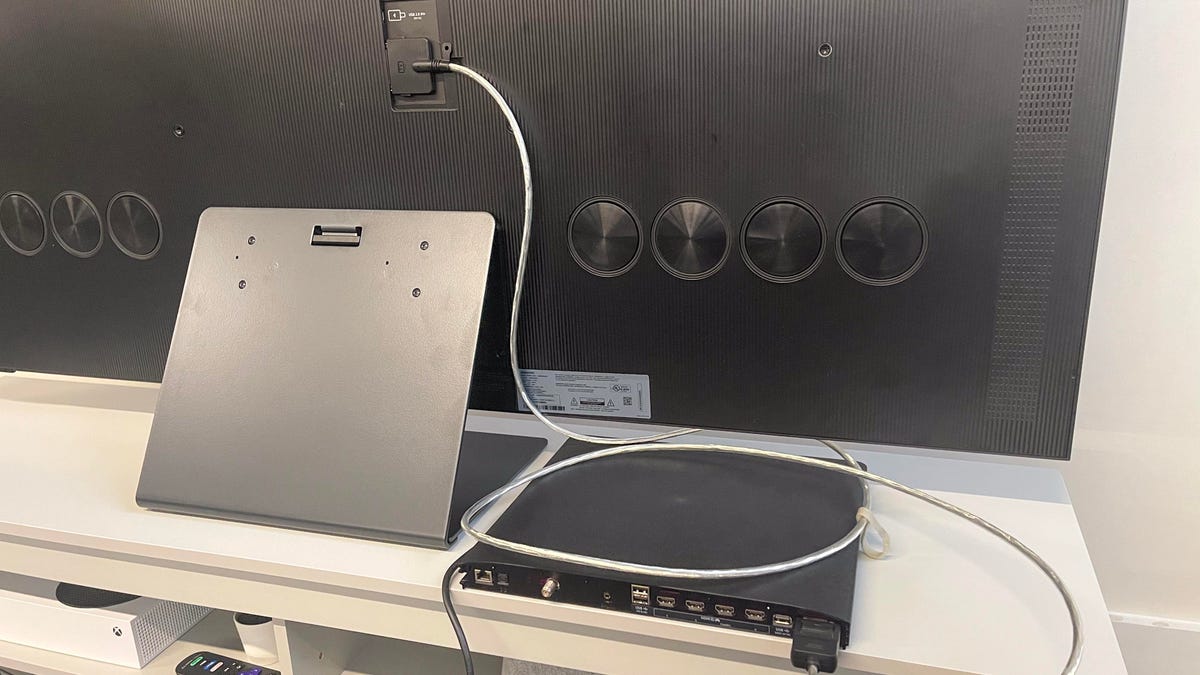
Samsung puts HDMI in a box
The most interesting part of the S95C’s design is that One Connect box. It’s a big external slab (11.5 by 13 by 1 inch HWD) that houses all of the TV’s inputs as well as its lone power plug. It connects to the TV itself via an 8-foot silver cord that had me checking over my shoulder for Githyanki. You connect your devices, like a cable box or game console, to the box instead of directly to the TV, allowing the sources and box to be stashed in a cabinet and deliver a one-cable installation to the panel.
With no need for inputs on the back, the TV itself is super thin at just 11mm deep. The front is clean and minimalist and the rear is marked by circular pods that help augment the built-in speakers. It’s obvious to me that Samsung is targeting the wall-friendly “gallery” design of the LG G3 with this TV, and yes, the Samsung is thinner.
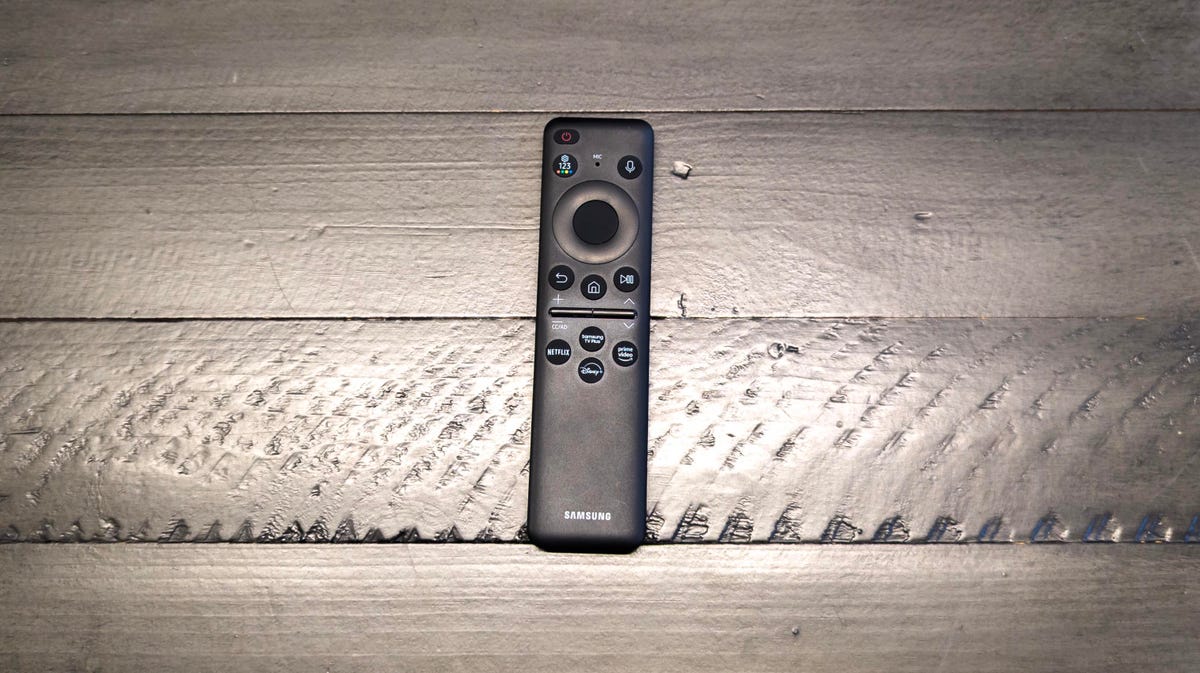
I like Samsung’s remote a lot better than LG’s too. Smaller than last year’s and plastic instead of metallic, it’s still excellent. The keys are well-placed, pleasantly sparse and lack garish colors, while the raised volume and channel bars are a nice change from standard buttons. I love that it’s rechargeable rather than reliant on batteries, and you can top it off via USB-C or the solar cell on the back.
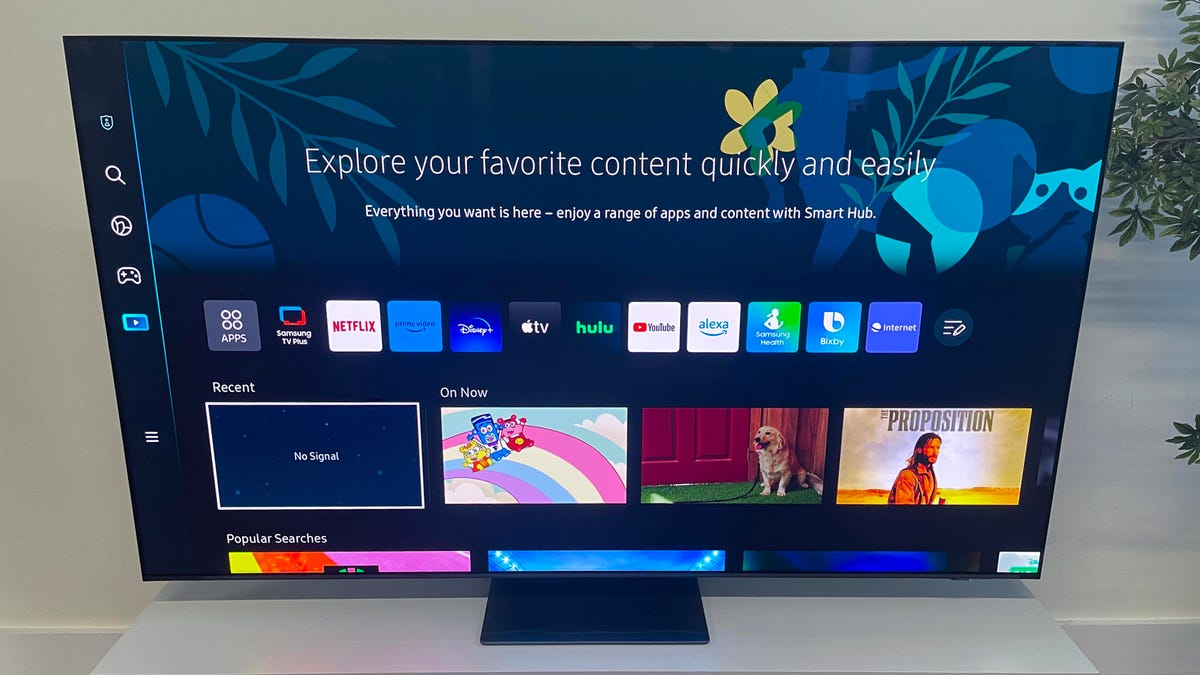
Complex, annoying menus
Unfortunately Samsung did nothing to improve its home page design from last year. Again, too much screen real estate is wasted with a big promo area at the top, the rest is mostly clutter and items I don’t care about, while many useful functions are buried deep in sub-menus. All the options can be fun to explore, but overall the menu looks dated and feels less personal than Google TV on Sony, for example. I’m still partial to Roku TV for its simplicity, and this iteration of Samsung’s TV menus is the opposite.
Like most new Samsung TVs the S95C has the company’s gaming hub, which connects to cloud gaming services including Xbox Game Pass, Nvidia GeForce Now and Amazon Luna. I didn’t test it this time around because, frankly, on a TV this expensive I’d expect any gamer to connect a real console rather than rely on cloud gaming. The system worked well enough when I tested it last year on the QN90B, but it requires a fast Internet connection (preferably wired, not Wi-Fi) and doesn’t look as good as a standard console.
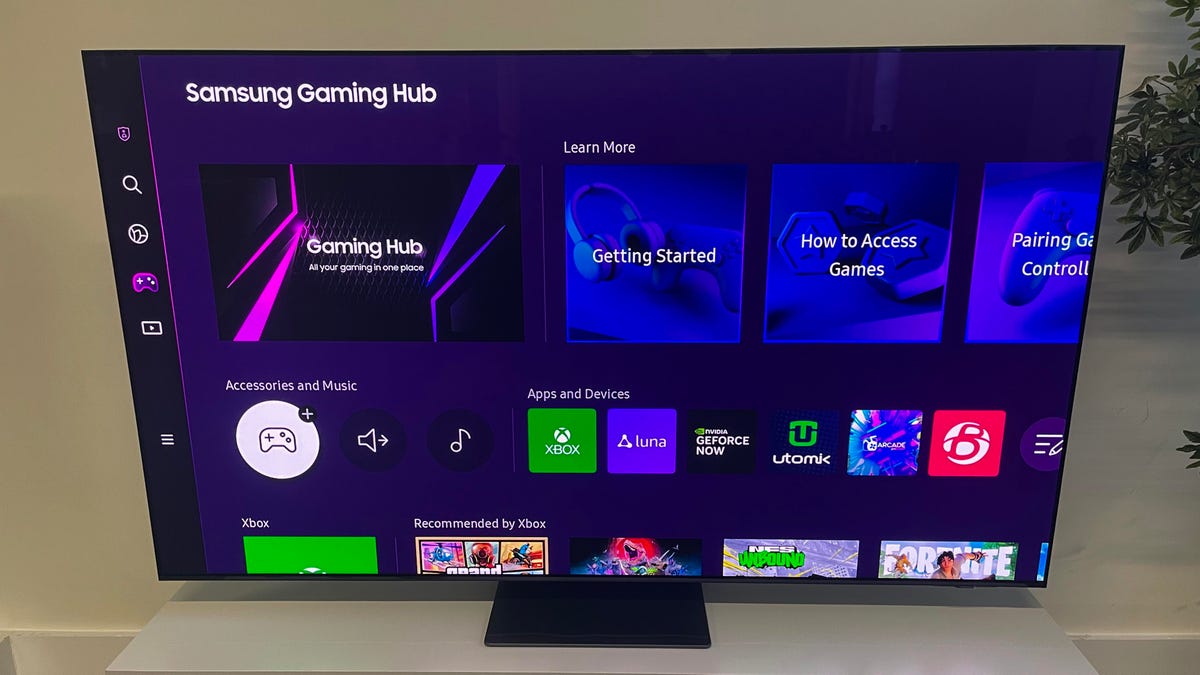
You can choose between Alexa and Samsung’s own Bixby for your voice assistant — Google Assistant is no longer an option. You access voice control by talking into the remote or speaking the wake word (“Alexa,” for example) into thin air, and the always-listening mic can be disabled if you want. The TV also works with Apple AirPlay.
QD-OLED, burn-in and 144Hz, oh my
The S95C is as packed with next-gen extras as any TV. Chief is its QD-OLED panel, which adds quantum dots to the image quality of OLED to deliver better color. Samsung also says the S95C is brighter than last year and according to my tests the color and brightness claims check out. For more on the tech behind QD-OLED and how it differs from WOLED, the tech used in LG’s OLED TVs, check out our in-depth QD-OLED explainer.
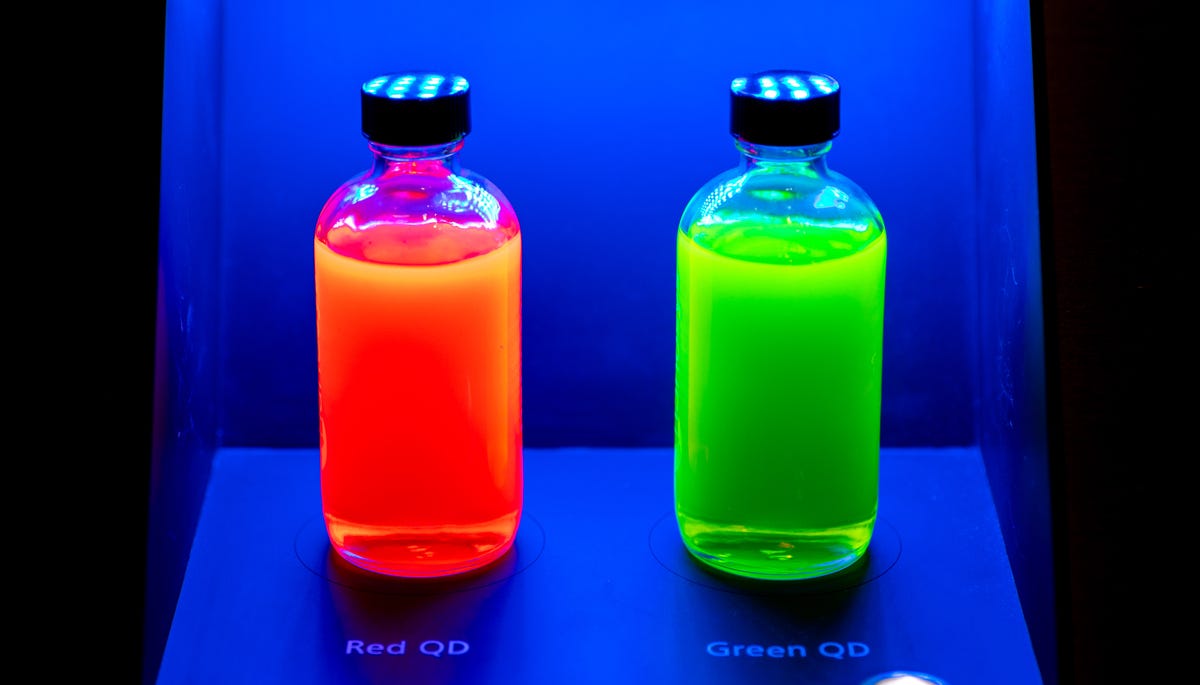
Like all OLED TVs, the S95C is more subject to both temporary and permanent image retention, also known as burn-in, than LCD-based TVs. As a much newer technology, it’s still unclear whether QD-OLED is more prone to burn-in than WOLED. I don’t test for burn-in at CNET but one site that does, rtings, found that last year’s Samsung QD-OLED TV (the S95B) evinced more burn-in than LG models. Since that test Samsung has updated the TV’s software and rtings found that the update was “very effective at reducing the appearance of permanent image retention, but it doesn’t remove it entirely” in the S95B. Samsung confirmed in an email to CNET that the S95C shares that updated software.
My take? I’m not worried about burn-in on any OLED TV used for normal viewing. For situations that experience “abnormal” viewing, for example, if I kept a TV tuned to CNN, ESPN or another channel with static image elements all day, I wouldn’t get any OLED-based TV. Check out our guide to OLED burn-in for more.
Other S95C features are in line with other high-end TVs, with the exception of Dolby Vision HDR — Samsung remains the only TV manufacturer to not embrace Dolby’s high dynamic range format, which isn’t a huge knock in my book — and 144Hz refresh rate input capability. This latter extra is also no big deal in my opinion, since you need a PC gaming card to take advantage of it. Even then, it likely won’t provide a big boost over 120Hz input from an Xbox Series X or a PlayStation 5.
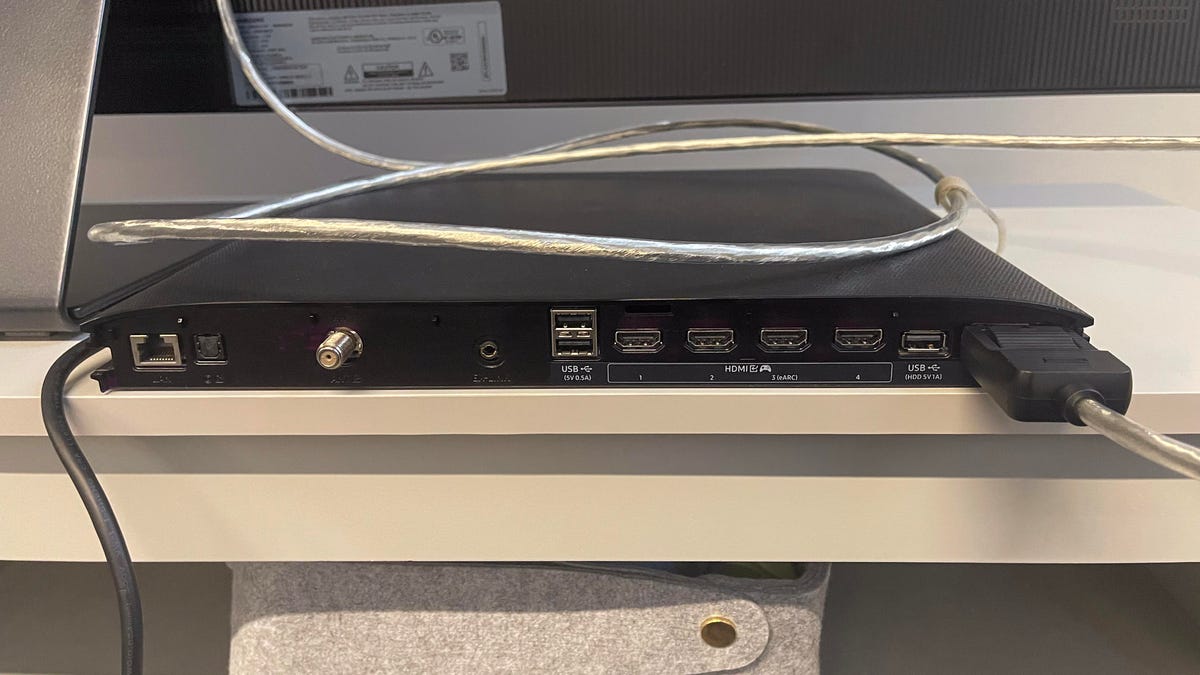
Connectivity, found on the external One Connect box, is as solid as I’d expect.
- Four HDMI inputs with HDMI 2.1, HDCP 2.2
- Two USB 2.0 ports
- Optical digital audio output
- RF (antenna) input
- RS-232 port (minijack, for service only)
- Ethernet (LAN) port
High-end OLED comparison: Samsung Q95C vs. LG G3
For my image quality comparison I lined the Samsung S95C up against three other OLED TVs: the LG G3, the LG C3 and the Sony A80K. The Samsung looked better than the C3 and the Sony, but not quite as impressive overall as the G3.
TV and movies: In my lineup the S95C and the LG G3 were definitely the best, standing out even above the other two spectacular-looking 2023 OLED TVs. Watching the montage of nature scenes and cityscapes from the Spears and Munsil benchmark, for example, both looked brighter and more dynamic, in particular in highlights like the setting sun or large patches of snow.
Between the two I got the impression that the G3 was slightly brighter, which I confirmed with spot measurements of my luminance meter. At times the LG was quite a bit brighter, leading to a feeling of more pop and dynamics.
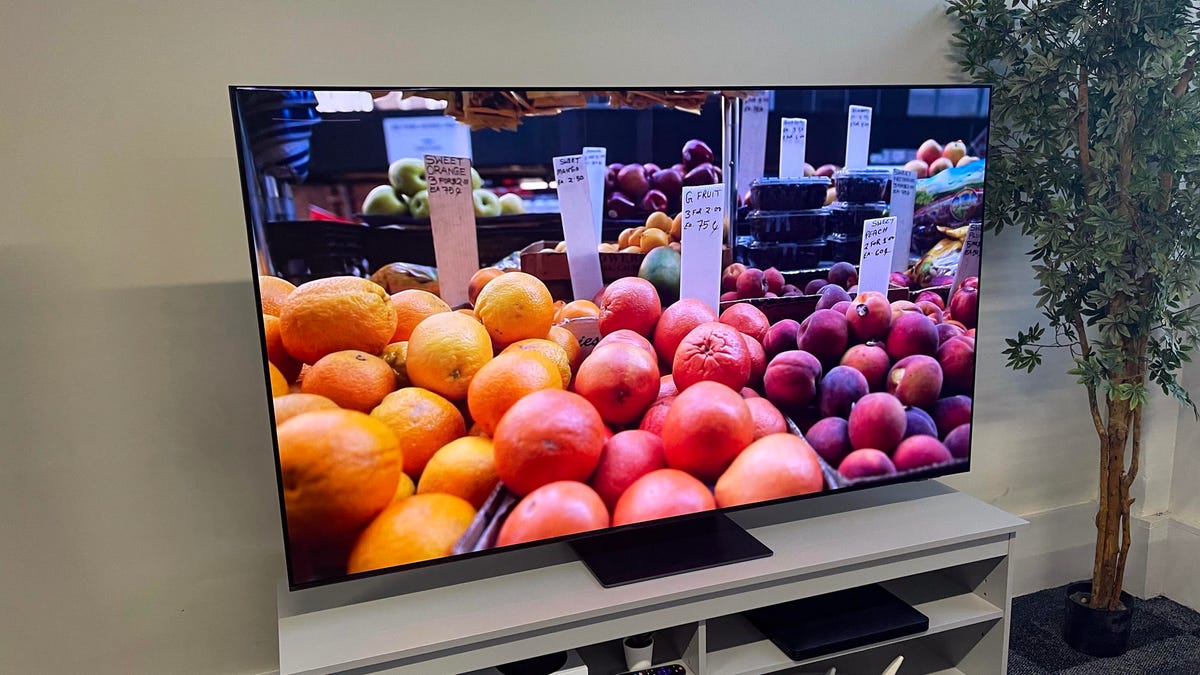
The Samsung has an advantage, meanwhile, in color saturation. Its reds in particular, for example in the fields of tulips, a pile of strawberries or the bulb of a cactus, looked richer than those of the G3 and the other OLED TVs. Not to say that the G3’s color looked undersaturated by any means, but next to the QD-OLED the difference was clear, and in very colorful scenes, especially ones with lots of red, I preferred the look of the Samsung.
In mixed bright and dark scenes, however, the extra brightness of the G3 and its handling of shadows beat the Samsung. A scene of Seattle at night, for example, showed more detail in the dark trees and realism in the shadows that was missing from the S95C.
Switching over to Netflix — whose red logo provided another example of the QD-OLED’s color advantage — the story was similar. Altered Carbon remains a great HDR demo and in the first scene of season 2, the S95C showed slightly richer reds in the lantern shades and the gold dress of the singer. It also delivered a bit less detail in the shadows and a less impactful image overall. It’s a tough call and both TVs looked mind-blowingly good, but I’d prefer the image of the G3 day-in and day-out.
Note that the above comparisons were made using Samsung’s Filmmaker picture mode, which measured best. Movie mode, despite being less accurate according to my measurements, delivered an image that some viewers might prefer, with a bit more detail in shadows and brighter midtones. Unfortunately Movie introduces some smoothing by default, so I recommend disabling it (Picture menu > Expert Settings > Picture Clarity Settings > Off).
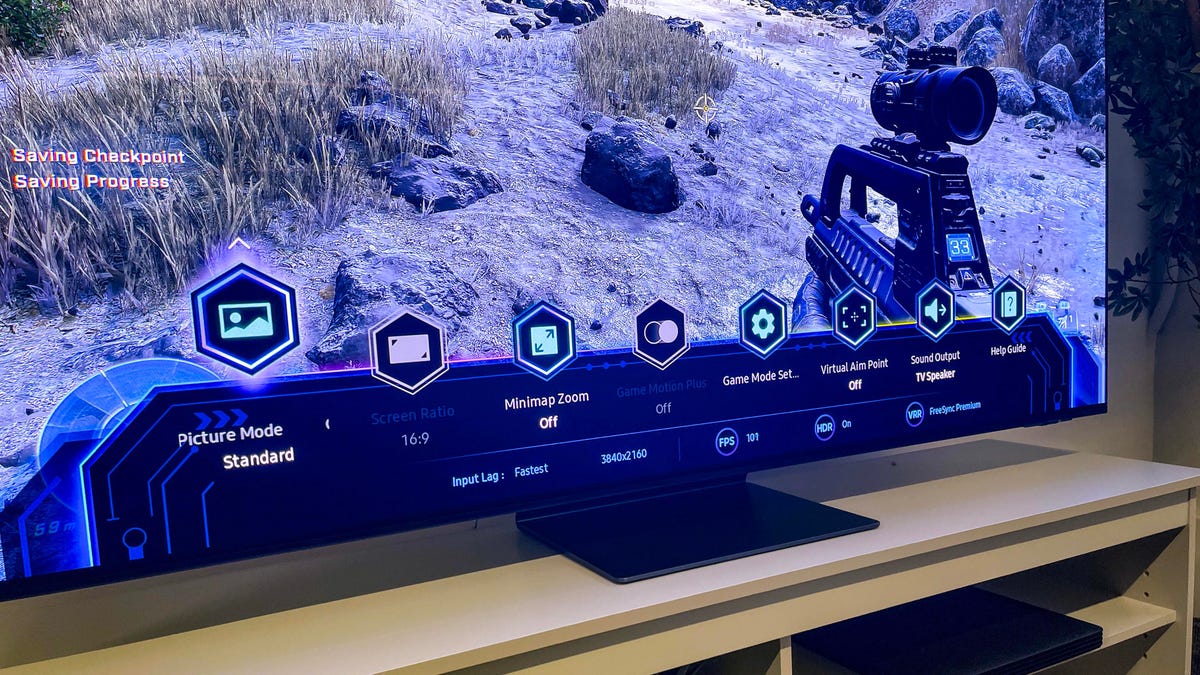
Gaming: The S95C is an excellent gaming TV. It doesn’t have quite the level of adjustments as the LG models but its game menus are still packed with options and games looked good in my tests. When I played Assassin’s Creed: Valhalla in the TVs’ standard picture modes, the colors on the Samsung popped more than on the others although the grass and other “natural” objects looked more neon and less realistic. Sports mode delivered the most natural color, although I could also choose the “original” setting. This seemed to leverage the non-gaming modes (like Filmmaker), which made colors look comparatively dull.
I liked the design of Samsung’s game bar menu better than that of the LG, however, and it presented more information at a glance without having to delve deep into menus. Samsung also gives you an option to introduce more smoothing into games (“Game Motion Plus”) although I don’t see why you’d want that. And unlike LG you can also toggle on a virtual crosshair option, which I appreciated.
Input lag was superb at around 9ms in game mode, basically the same as the LGs. According to my Xbox’s details screen the Samsung supported 4K/120Hz and VRR, but not Dolby Vision (which LG does support).
Bright lighting: The Samsung S95C is excellent in bright rooms, thanks in part to its high light output, but it’s not quite as bright as the G3 and its screen doesn’t handle reflections quite as well.
Light output in nits
| TV | Brightest mode (HDR) | Accurate mode (HDR) | Brightest mode (SDR) | Accurate mode (SDR) |
|---|---|---|---|---|
| Hisense U8H | 1,867 | 1,867 | 1,605 | 1,605 |
| TCL 65R655 | 1,387 | 1,194 | 1,292 | 624 |
| LG OLED65G3 | 1,378 | 1,378 | 725 | 724 |
| Samsung QN65S95C | 1,348 | 1,326 | 238 | 648 |
| LG OLED65C3 | 861 | 817 | 501 | 464 |
| LG OLED65C2 | 812 | 759 | 413 | 389 |
As usual the Samsung’s brighter picture modes, Standard and Dynamic respectively for SDR and HDR, were quite inaccurate. For the accurate results listed above, I used Movie for SDR and Filmmaker mode for HDR. I recommend S95C owners do the same to get good color in bright rooms, although they might want to increase brightness with SDR sources.
The S95C has an excellent anti-reflective screen but it didn’t handle ambient light quite as well as the G3. Reflections appeared very slightly brighter and more obvious on the Samsung, and the screen of the LG was just a bit darker, leading to slightly less impressive contrast in dark scenes.
Uniformity and viewing angle: Like most other OLED TVs I’ve tested the S95C looked excellent from off-angle and showed a uniform image across the screen, matching the G3 in both respects.
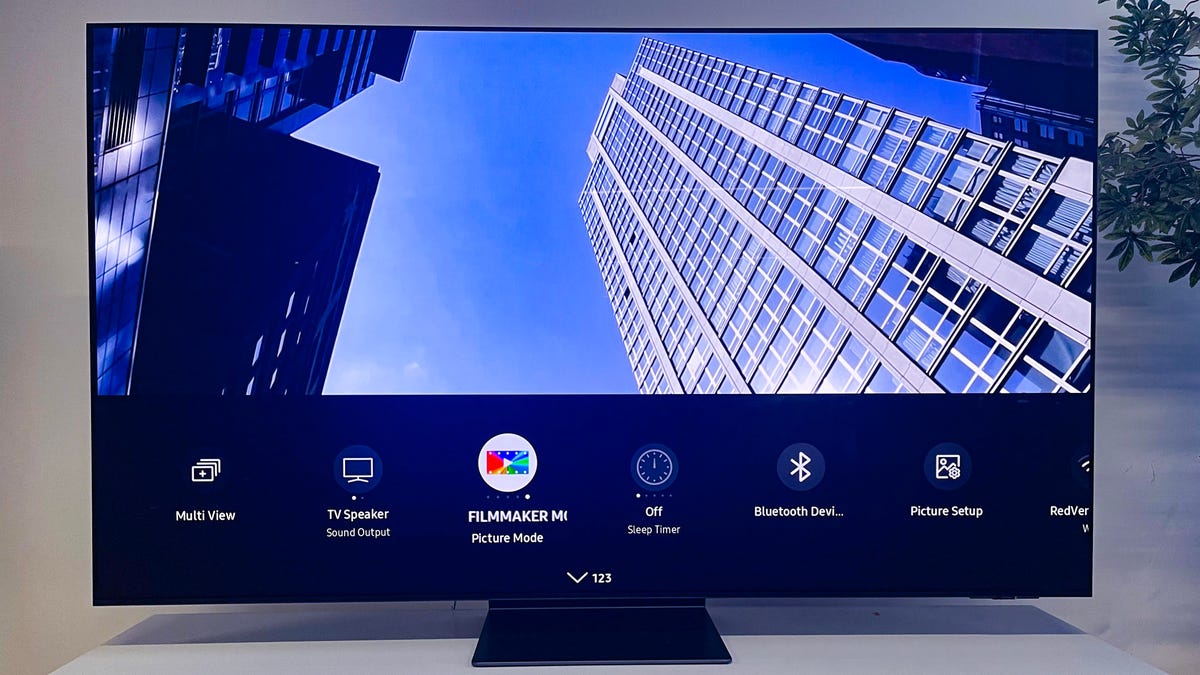
Picture setting notes and test results
In HDR mode the Filmmaker picture preset is the most accurate, with an EOTF that tracked the target much more closely than Movie mode (which, as mentioned above, was too bright in the middle range). Standard was slightly brighter than either but much less accurate and exceedingly blue. In SDR mode Filmmaker was too dim, however, so I ended up choosing Movie instead. Both were accurate to the BT.1886 target gamma Samsung used as default, but note for my Geek Box results below I tweaked to target a 2.2 gamma instead since it’s my standard.
Geek Box
| Test | Result | Score |
|---|---|---|
| Black luminance (0%) | 0.000 | Good |
| Peak white luminance (SDR) | 648 | Good |
| Avg. gamma (10-100%) | 2.21 | Good |
| Avg. grayscale error (10-100%) | 1.18 | Good |
| Dark gray error (30%) | 0.36 | Good |
| Bright gray error (80%) | 2.28 | Good |
| Avg. color checker error | 1.32 | Good |
| Avg. saturation sweeps error | 1.07 | Good |
| Avg. color error | 0.89 | Good |
| 1080p/24 Cadence (IAL) | Pass | Good |
| Input lag (Game mode) | 9.03 | Good |
| HDR10 | ||
| Black luminance (0%) | 0.000 | Good |
| Peak white luminance (10% win) | 1348 | Good |
| Gamut % UHDA/P3 (CIE 1976) | 99.89 | Good |
| ColorMatch HDR error | 4.68 | Average |
| Avg. color checker error | 2.79 | Good |
| Input lag (Game mode, 4K HDR) | 9.67 | Good |
See How We Test TVs for more details.
Portrait Displays Calman calibration software was used in this review.
